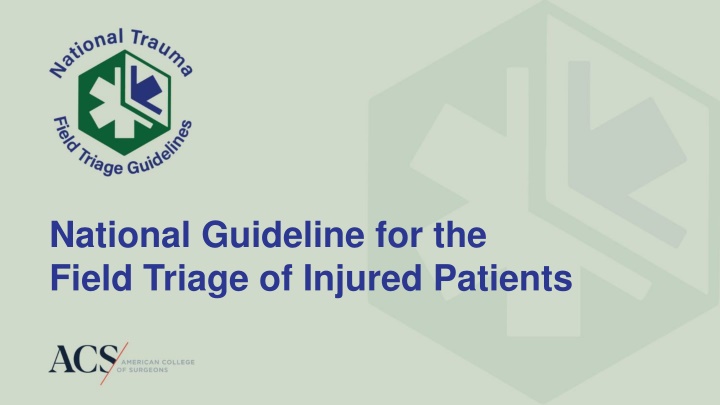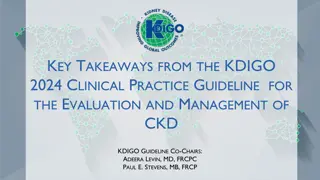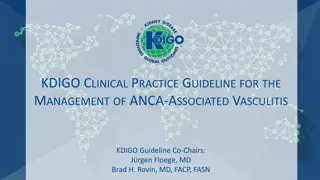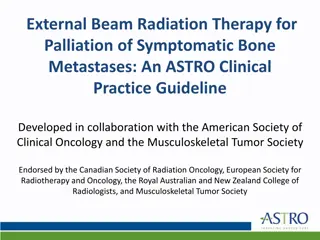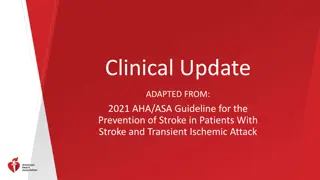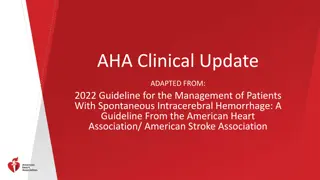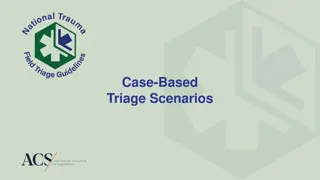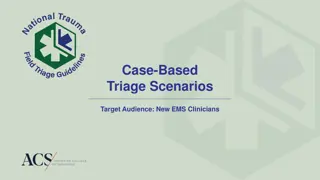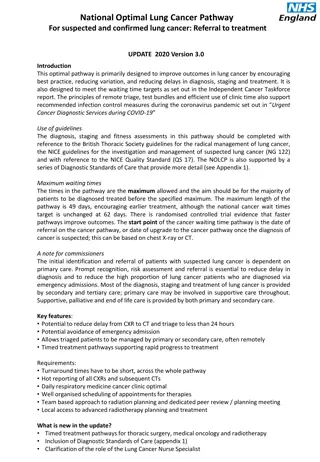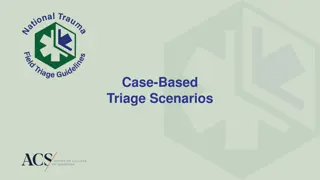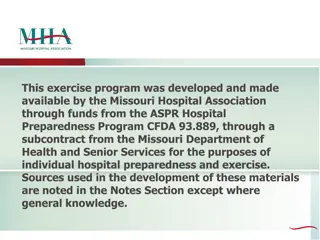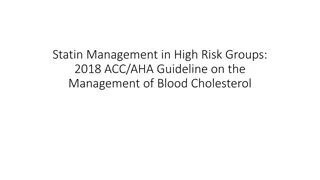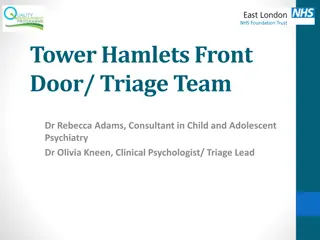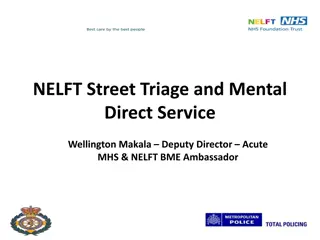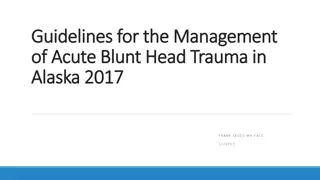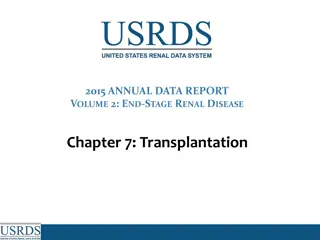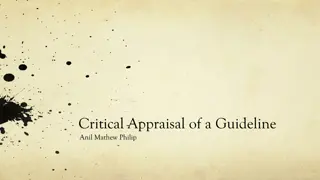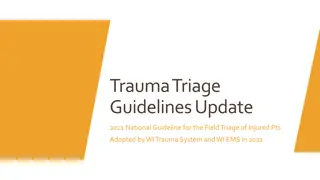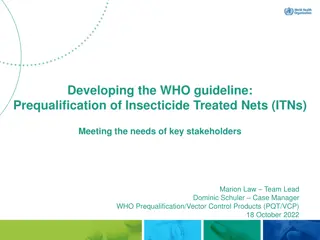National Guideline for Field Triage of Injured Patients Update
The National Guideline for Field Triage of Injured Patients has been updated to incorporate new research and evidence since 2011. This updated guideline aims to reduce time and variation in making destination decisions, with a focus on minimizing under- and over-triage. The process included EMS input, responses from national organizations, and systematic reviews of relevant literature. The new guideline simplifies the assessment process for EMS and emphasizes efficient transport decision-making. It provides a structured flow of information to guide professionals in determining the most appropriate destination for injured patients.
Download Presentation

Please find below an Image/Link to download the presentation.
The content on the website is provided AS IS for your information and personal use only. It may not be sold, licensed, or shared on other websites without obtaining consent from the author.If you encounter any issues during the download, it is possible that the publisher has removed the file from their server.
You are allowed to download the files provided on this website for personal or commercial use, subject to the condition that they are used lawfully. All files are the property of their respective owners.
The content on the website is provided AS IS for your information and personal use only. It may not be sold, licensed, or shared on other websites without obtaining consent from the author.
E N D
Presentation Transcript
National Guideline for the Field Triage of Injured Patients
Presenter Name Credentials Affiliation
Objectives Describe the update process Explain the new Guideline Discuss the changes from the 2011 Guideline Review local & regional use of the Guideline
Remember Follow your local protocol & medical director guidance
Why a guideline? Achieve optimal patient outcomes through transport to most appropriate destination within the trauma system Right Patient, Right Place, Right Time Minimize variation in destination decisions
Why an update? New research and evidence since 2011 Guideline Reduce time and variation in making destination decisions Opportunity to reduce under- & over-triage
Update Process Inclusion of EMS input Survey distributed to 29 national organizations representing EMS and trauma 3,958 Responses Interdisciplinary national Expert Panel Systematic reviews of EMS field triage and other relevant published literature Rigorous process for adding or removing criteria
2011 Guideline 1. Assess vital signs & level of consciousness 2. Assess anatomy of injury 3. Assess mechanism of injury & evidence of high energy impact 4. Assess special patient or system considerations
Whats new? Not an algorithm Simplified to align with information flow to EMS Reflect how assessments occur on the scene Gets to transport decision sooner
New Guideline Flow of information to EMS Risk Guideline is intended to be read from left to right and top to bottom Evidence along gradient of likelihood for serious injury
Age-related changes to vital signs have been added Source: Getty Images. Used with permission
Extrication relates to entrapment, not simple confinement
Applying the Guideline Appreciate and understand the context Know your local and regional trauma resources Encourage adoption by local and state EMS agencies Sustain education and training Track use and outcomes through performance improvement
Encourage Adoption Educator: insert graphic or info on your local/state/regional trauma system
Local & Regional Resources Educator: insert map of local or regional trauma centers
Transport According to Local Protocol Source: Getty Images. Used with permission
ALS Intercepts & Air Assets Educator: insert map of local ALS intercepting agencies &/or air assets. May also show local protocols on using those, or other, assets.
Summary Update process inclusive of EMS clinician input New guideline aligns with information flow to EMS and how assessments occur on the scene Guideline use is best assessed through impact on under- & over-triage rates
